Are you tired of your furry friend’s overexcited doorbell reactions disrupting your peaceful home environment? We’ve all been there, struggling to manage our dog’s undesirable door-related behavior. But fret not, as we’re here to guide you through mastering doorbell dog etiquette with expert strategies that will transform your dog’s greetings with guests.
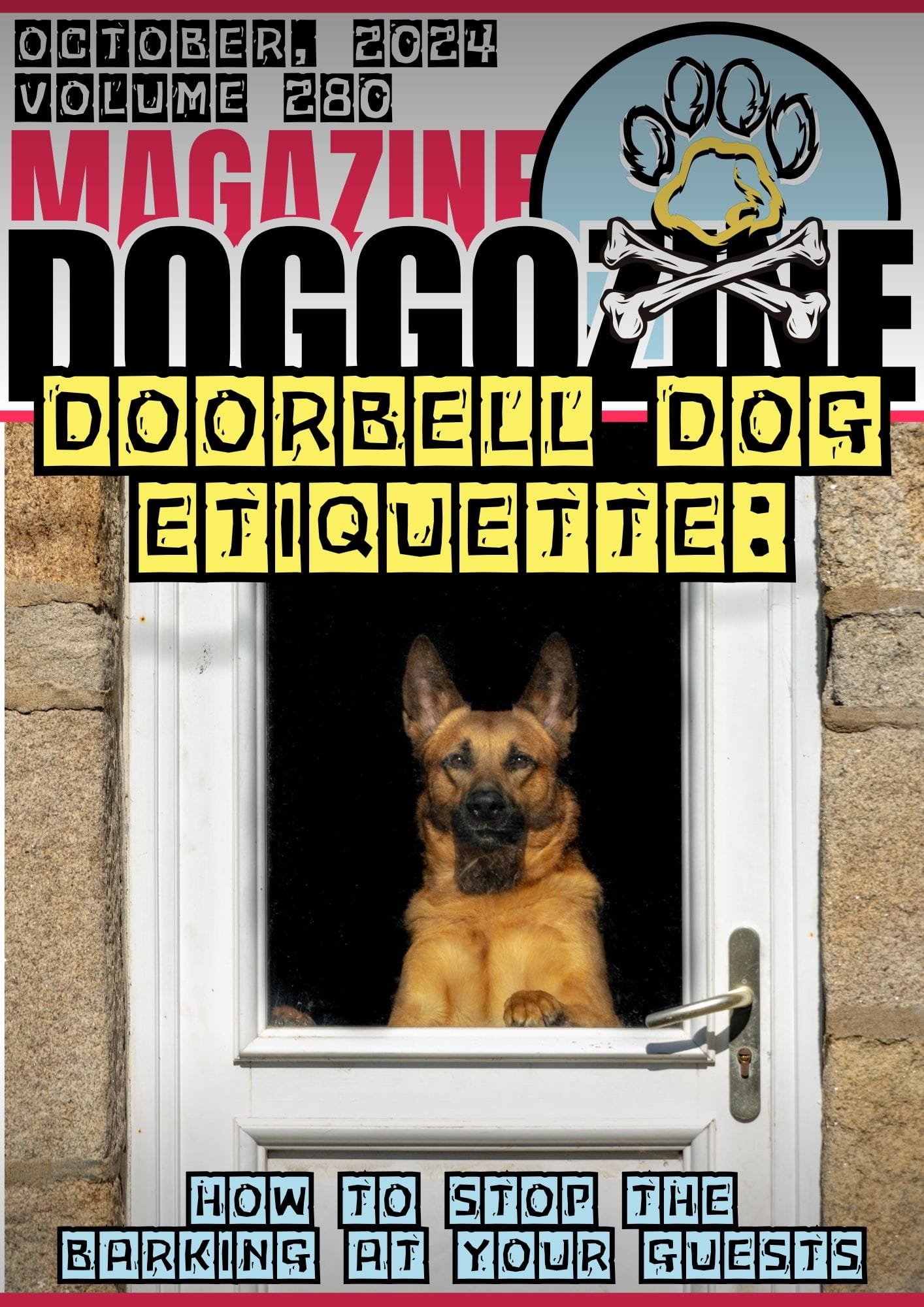
HOW TO TRAIN YOUR DOG TO GREET GUESTS GRACEFULLY
Imagine a scenario where your dog greets visitors gracefully and calmly, creating a harmonious atmosphere for everyone. In this comprehensive guide, we will explore the basics of training your dog for a calmer doorbell response, including shifting associations with the doorbell sound and teaching your dog to go to their designated spot upon hearing the signal.
Mastering Doorbell Dog Etiquette For A Peaceful Home Environment
With actionable tips, safety measures, and reinforcement techniques, we’ll equip you with the tools to address challenging behaviors and ensure a well-managed doorbell interaction for a peaceful and joyful home environment. Let’s embark on this transformative journey together and set the stage for a more disciplined and enjoyable experience with your beloved pet.
Understanding the Importance of Doorbell Dog Etiquette
A peaceful home environment is every pet owner’s dream. However, when your furry friend exhibits undesirable door-related behavior, such as excessive barking or jumping, it can quickly turn into a nightmare.
Imagine this: you’re expecting guests, but as soon as the doorbell rings, your dog goes into a frenzy, barking incessantly and making it impossible to greet your visitors gracefully. Not only is this behavior disruptive, but it can also be stressful for both you and your dog.
That’s why mastering doorbell dog etiquette is crucial. By teaching your dog to remain calm and composed when someone arrives at the door, you can create a more harmonious living space for everyone involved.
🔑 Key Points: Doorbell dog etiquette is essential for maintaining a peaceful home environment and preventing undesirable door-related behavior in dogs.
The Basics of Training Your Dog for a Calmer Doorbell Response
Embarking on a training process to improve your dog’s doorbell response requires patience, consistency, and positive reinforcement. The goal is to replace the unwanted behavior with good behavior, and this can be achieved through positive-reinforcement-based training.
First, identify your dog’s triggers. Is it the sound of the doorbell itself, or the anticipation of a visitor? Once you know what sets off your dog’s barking, you can begin to work on desensitizing them to the stimulus.
Start by introducing the doorbell sound at a low volume and rewarding your dog with treats for remaining calm. Gradually increase the volume over time, always rewarding good behavior.
Remember, training sessions should be short and fun. Keep things upbeat and engaging, and soon your dog will start to associate the doorbell with positive experiences rather than a reason to bark.
🔑 Key Points: Positive-reinforcement-based training, combined with patience and consistency, is the foundation for teaching your dog a calmer response to the doorbell.
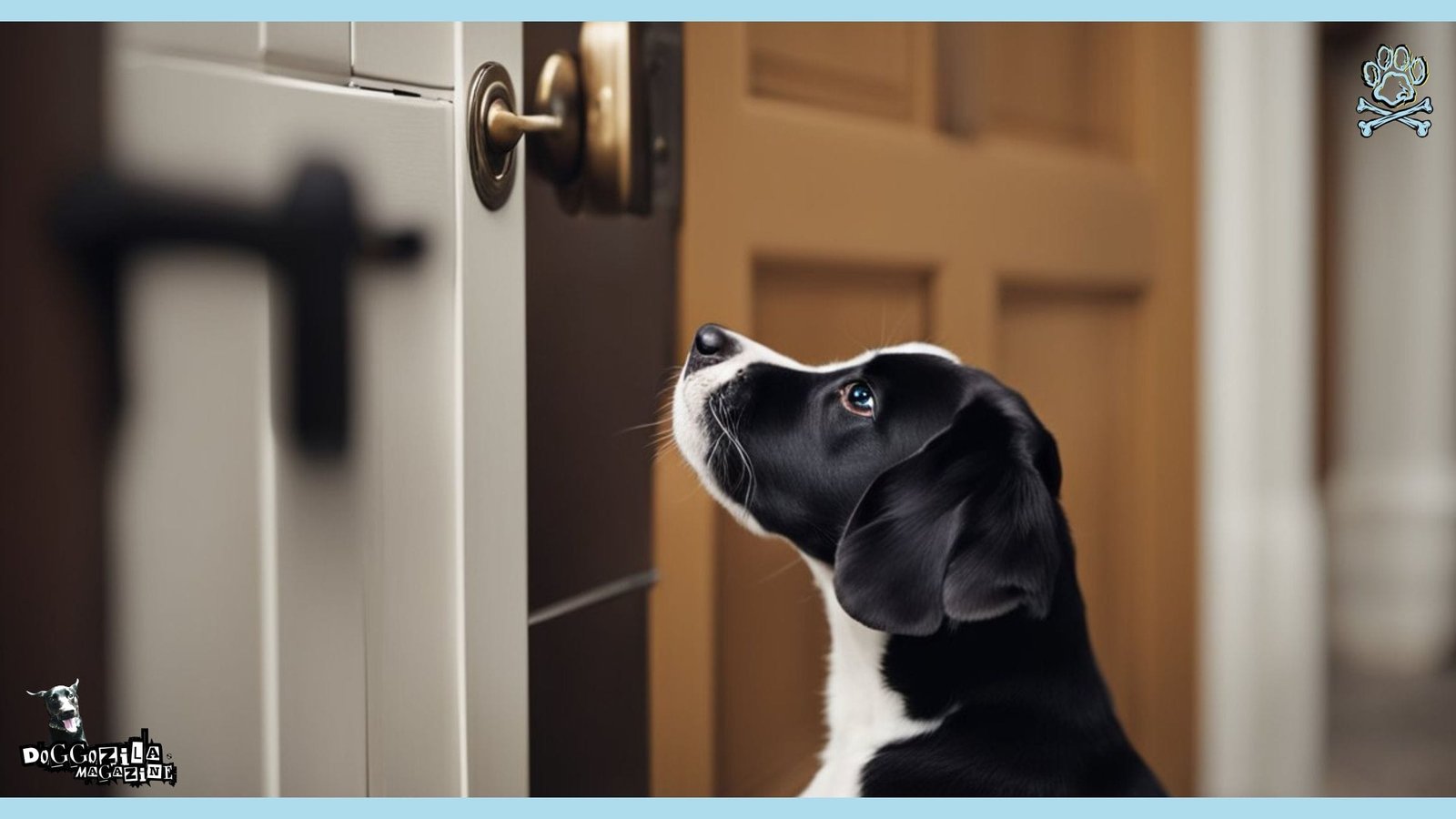
SHIFT ASSOCIATIONS WITH THE DOORBELL SOUND
One of the most effective ways to change your dog’s reaction to the doorbell ring is by shifting their associations with the sound. Instead of allowing the doorbell to trigger excitement or anxiety, you can train your dog to view it as a cue for good things to come.
High-Value Treats
Start by having a supply of high-value treats on hand, such as small pieces of cheese, chicken, or their favorite snack. Whenever the doorbell rings, immediately give your dog a treat, even if they start to bark.
Positive Reinforcement Techniques
Consistently pair the doorbell sound with treats, praise, and other positive reinforcement techniques. This could include verbal praise, petting, or even a quick play session.
Over time, your dog will begin to associate the doorbell with pleasant experiences, reducing their urge to bark or become over-excited.
„ For example, let's say your dog, Max, typically barks and runs to the door when the doorbell rings. By immediately offering Max a treat and praise when the bell sounds, he'll gradually learn that good things happen when someone arrives. With patience and repetition, Max will start to look to you for a treat when the doorbell rings, rather than rushing to the door and barking. “
🔑 Key Points: By consistently pairing the doorbell sound with high-value treats and positive reinforcement techniques, you can help your dog form new, more positive associations with the arrival of guests.
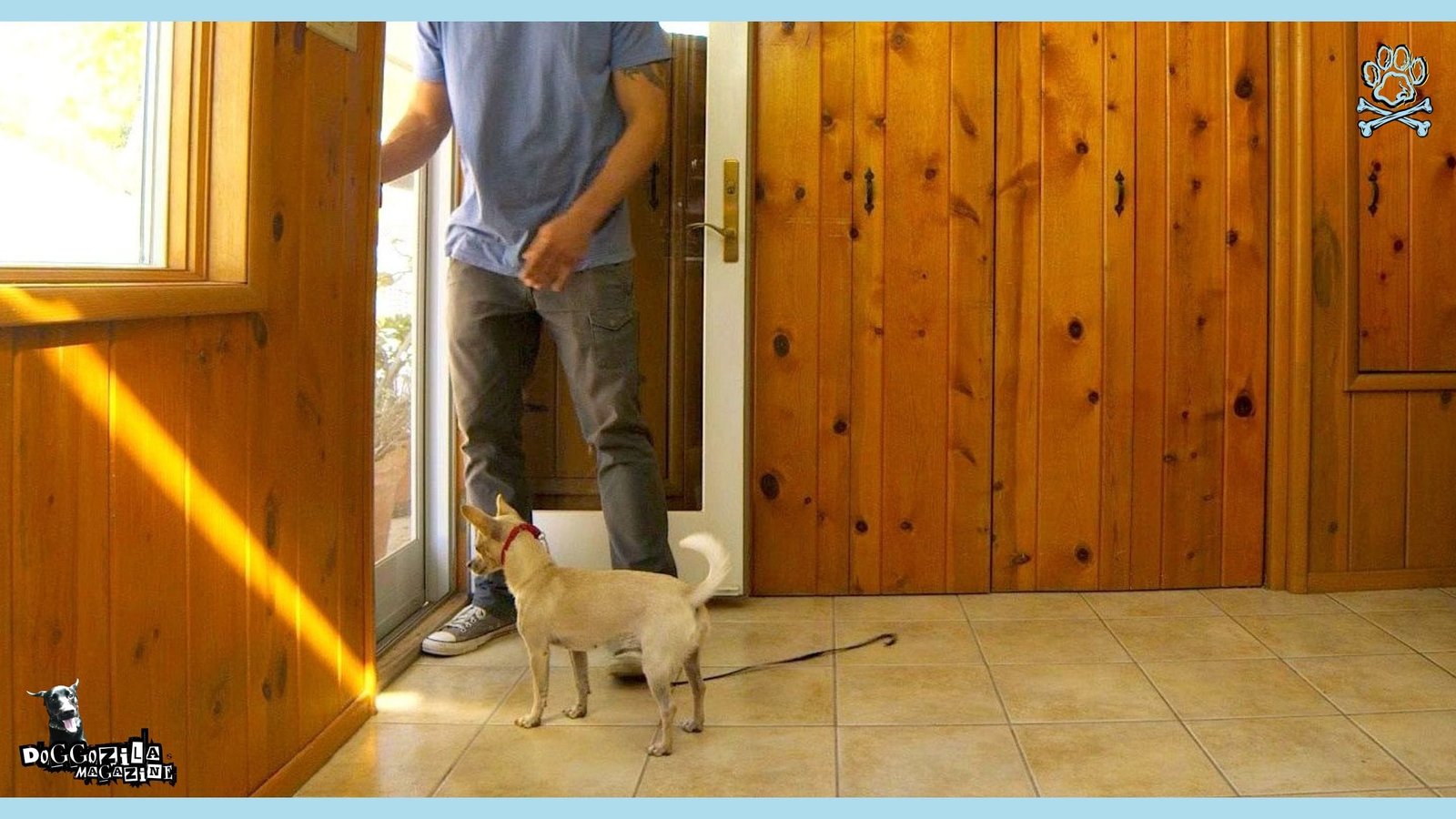
TEACHING YOUR DOG TO GO TO THEIR PLACE AT THE DOORBELL SIGNAL
Another effective strategy for managing your dog’s undesirable behavior when the doorbell rings is to teach them to go to a designated place, such as a bed or mat, on cue.
Choosing a Verbal Cue
Start by selecting a verbal cue, such as “place” or “bed,” that you’ll use consistently during training sessions. This cue will signal to your dog that it’s time to go to their designated spot.
Introducing the Concept of Doorbell Dog Etiquette
Begin by placing a mat or bed in a quiet area of your home. Lead your dog to the mat, using a treat to guide them if necessary. Once they’re standing on the mat, give your verbal cue and offer a treat.
Repeat this process several times, gradually increasing the distance between you and the mat. Each time your dog successfully goes to their place, reward them with lots of delicious treats and praise.
Incorporating the Doorbell Dog Etiquette
Once your dog has mastered going to their place on cue, start incorporating the doorbell into your training. Have a friend or family member ring the doorbell while you give your dog the “place” cue.
If your dog goes to their mat and stays there, reward them generously. If they get up or start to bark, calmly lead them back to the mat and try again.
„ For example, let's say your dog, Luna, gets overexcited when visitors arrive.
By teaching Luna to go to her bed when the doorbell rings, you provide her with a clear task that keeps her occupied and away from the door. With consistent practice, Luna will learn that the doorbell cue means it's time to settle on her bed, rather than bark or jump on guests. “
🔑 Key Points: Teaching your dog to go to a designated place on cue when the doorbell rings provides a constructive alternative to undesirable behavior, promoting a calmer household.
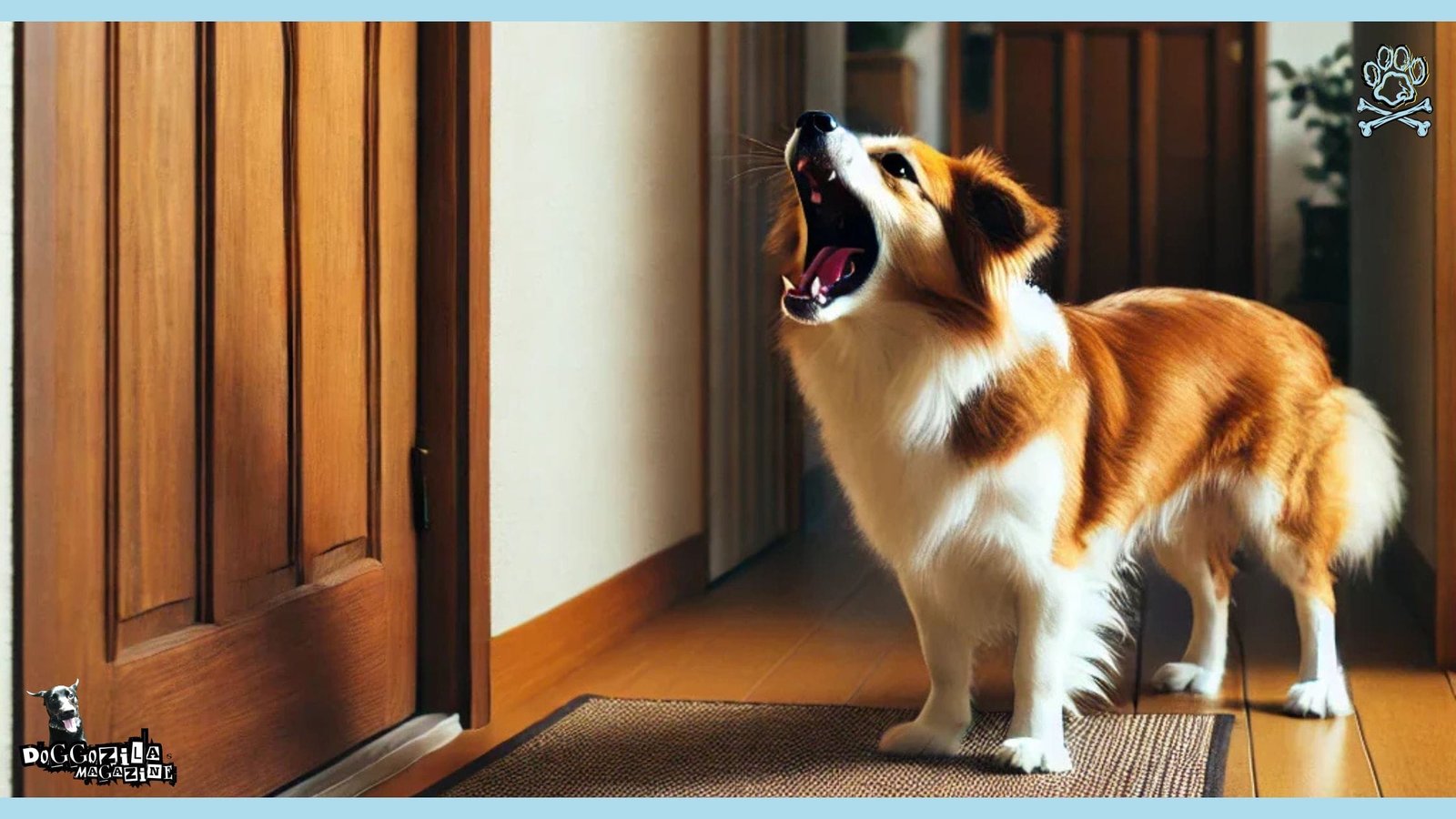
ENSURING CONSISTENCY: MAKING THE DOORBELL A TRAINING CUE
Consistency is key when teaching your dog polite doorbell manners. By using the doorbell as a training cue, you can help your dog understand what’s expected of them when guests arrive.
Prepare the environment for the doorbell dog etiquette training
Each time the doorbell rings, give your dog the “place” cue or ask for a polite sit. Consistently using the same cue and rewarding the desired behaviors will reinforce the overall goal of doorbell dog etiquette.
For instance, if you have a reliable “come” command, you can use it to call your dog away from the door when the bell rings. Once they come to you, ask for a sit and reward them for their compliance.
🔑 Key Points: Utilizing consistent cues, like a reliable “come” command or a “sit” signal, in conjunction with the doorbell can help your dog understand and comply with your expectations for good door manners.
Addressing the Challenge of Multiple Dogs at the Door
In households with multiple dogs, teaching good door manners can be a bit more complex. Each dog may have different reactions to the doorbell, making separate training sessions necessary to address individual needs.
To prevent one dog’s excitement from influencing the other, work with each dog individually. This allows you to focus on their specific challenges and tailor your training approach accordingly.
„ For example, if you have two dogs, Buddy and Daisy, you might start by training Buddy while Daisy is in another room. Once Buddy has mastered the desired behavior, you can switch and work with Daisy separately. “
By giving each dog the attention they need to succeed, you can ensure that all your furry family members learn to greet guests gracefully.
🔑 Key Points: When training multiple dogs, separate sessions and individual attention are essential to prevent unwanted behaviors from spreading between the dogs.
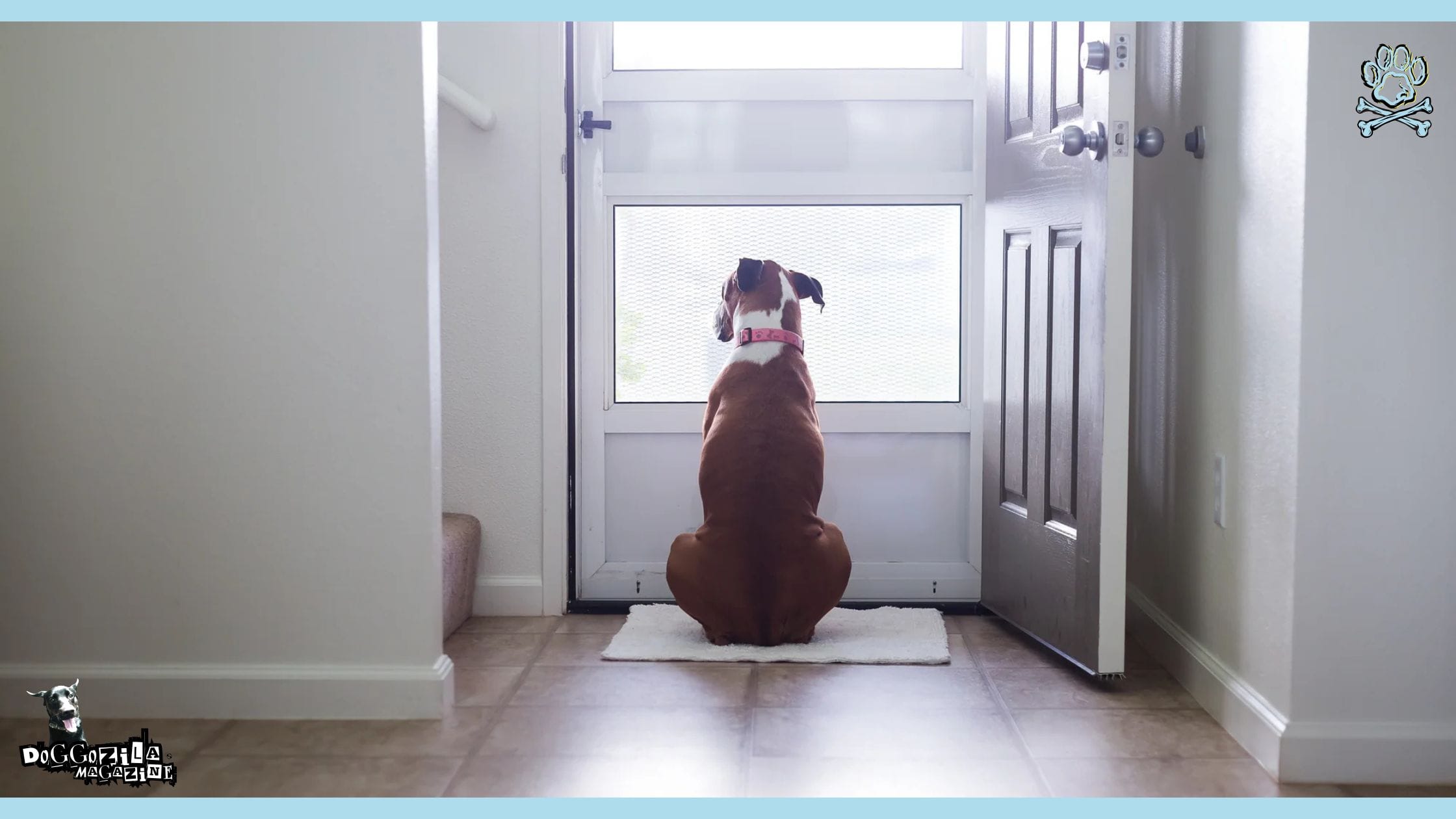
Safety Measures During Training Sessions
While training your dog to master doorbell dog etiquette, it’s crucial to prioritize safety for both your dog and your guests. Implementing a few key safety measures can help prevent accidents and ensure a positive learning experience.
Consider keeping your dog on a leash or harness during the early stages of training. This allows you to maintain control and prevent your dog from rushing toward the door or jumping on visitors.
In some cases, using a muzzle might be necessary, especially if your dog has a history of nipping or biting when excited. A well-fitted muzzle can provide an extra layer of safety while still allowing your dog to participate in training.
Always ensure that your guests maintain a safe distance from your dog until you’re confident in their door manners.
🔑 Key Points: Leashing, the use of a muzzle, and maintaining a safe distance between your dog and guests are important safety precautions during doorbell dog etiquette training.
Reinforcing Desirable Door Manners With Rewards and Praise
Positive reinforcement is a powerful tool when shaping your dog’s behavior. By rewarding good door manners with praise and treats, you can encourage your dog to repeat the desired actions in the future.
Whenever your dog exhibits calm, polite behavior in response to the doorbell, be sure to lavish them with verbal praise and petting. This could be as simple as saying, “Good job!” or “Yes!” in a happy, upbeat tone.
In addition to verbal praise, offer your dog a tasty treat as a reward for their good behavior. Choose treats that are small, easily consumable, and highly motivating for your dog.
„ For example, if your dog, Charlie, sits calmly when the doorbell rings instead of barking or jumping, immediately praise him and offer a treat. This reinforces the idea that sitting is a good alternative to the previously unwanted behavior. “
Over time, you can phase out the treats and rely more on verbal praise and petting. However, it’s important to continue reinforcing good behavior to maintain your dog’s doorbell dog etiquette skills.
🔑 Key Points: Consistently rewarding your dog’s desirable door manners with a combination of praise, petting, and tasty treats reinforces good behavior and encourages long-term success.
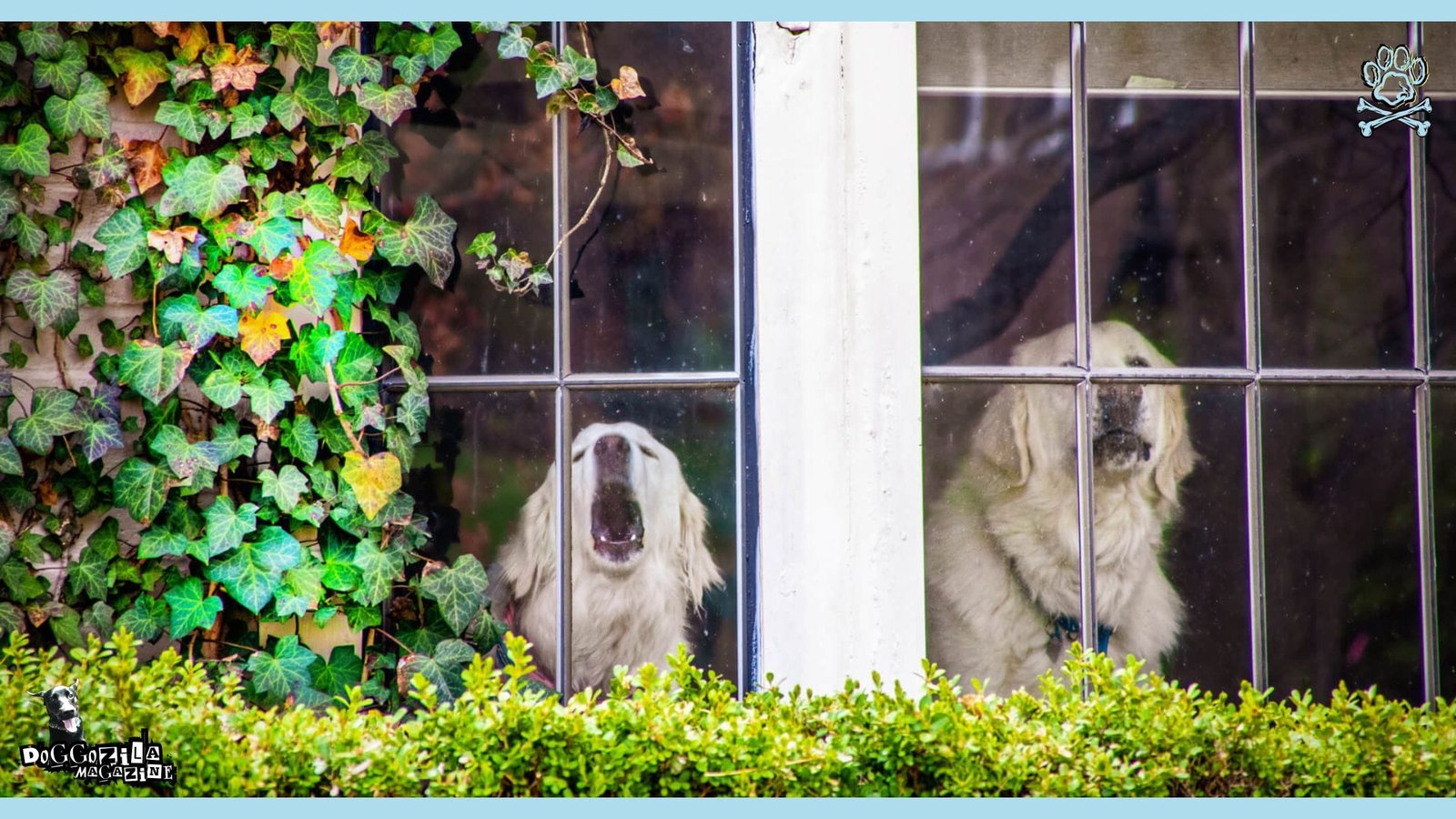
IMPLEMENTING A THREE-STEP TRAINING PROCESS FOR BEST RESULTS
To achieve the best results when teaching your dog doorbell etiquette, consider implementing a three-step training process that addresses your dog’s initial reaction, builds self-control, and reinforces good behavior.
Step 1: Identify and Redirect the First Trigger of Excitement
When the doorbell rings, your dog’s initial reaction might be to bark, jump, or run to the door. To counteract this, immediately redirect your dog’s attention with a cue, such as “sit” or “place.”
By giving your dog a specific task to focus on, you can interrupt their excitement and lay the foundation for a calmer response.
Step 2: Build the Muscle of Self-Control
Once your dog has mastered the initial redirection, work on extending the duration of their calm behavior. Ask your dog to hold their sit or stay in their designated place for longer periods, gradually increasing the time between the doorbell ring and the reward.
This helps your dog build the “muscle” of self-control, making it easier for them to remain composed when guests arrive.
Step 3: Reinforce Calm Behavior
As your dog becomes more proficient at responding calmly to the doorbell, be sure to consistently reinforce their good behavior with praise, treats, and positive attention.
This could include inviting your dog to greet guests politely once they’ve demonstrated self-control or providing them with a special toy or chew to enjoy while visitors are present.
🔑 Key Points: A three-step process that addresses your dog’s initial reaction, builds self-control, and reinforces calm behavior can lead to more effective and long-lasting results in doorbell dog etiquette training.
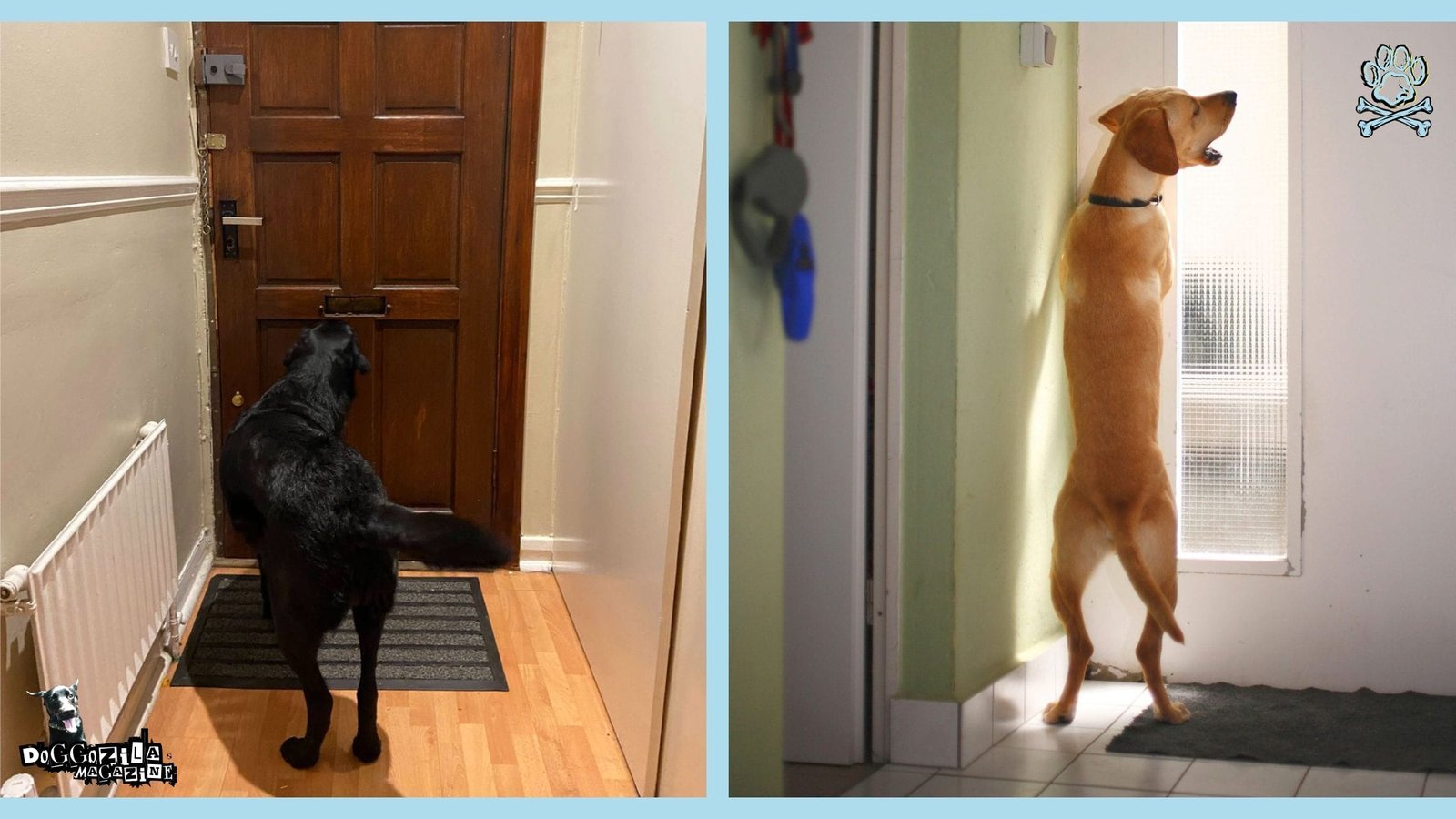
ADDITIONAL TIPS FOR MANAGING OVEREXCITED OR OVERPROTECTIVE DOGS
Some dogs may exhibit more challenging behaviors when it comes to doorbell dog etiquette, such as excessive excitement or overprotective tendencies. In these cases, a few additional strategies can help manage your dog’s behavior.
Tired Dog Is Calm Dog
If your dog is prone to general hyperactive behavior, consider increasing their daily exercise and mental stimulation. A tired dog is often a calmer dog, and providing outlets for their energy can help reduce their reactivity to doorbells and visitors.
For dogs with overprotective tendencies, work on building their confidence and socialization skills. Gradually expose them to a variety of people and situations in a controlled, positive manner to help them learn that new people aren’t a threat.
If your dog’s overprotective behavior persists or becomes a safety concern, don’t hesitate to seek the guidance of a professional dog trainer or behaviorist. They can provide personalized advice and support tailored to your dog’s specific needs.
🔑 Key Points: Managing an overexcited or overprotective dog may require additional strategies, such as increased exercise, confidence-building socialization, and the guidance of a professional trainer when needed.
Expert Advice: When to Seek Professional Help for Doorbell Dog Etiquette
While many dogs can learn doorbell dog etiquette with consistent training and positive reinforcement, some may exhibit more challenging behaviors that require expert guidance. If your dog’s door-related behavior persists despite your best efforts or if you feel overwhelmed by the training process, it’s essential to seek professional help.
A certified dog trainer or behaviorist can provide valuable insights and tailored training plans to address your dog’s specific needs. They can help you troubleshoot any roadblocks and offer support throughout the training journey.
🔑 Key Points: Don’t hesitate to reach out to a professional dog trainer or behaviorist if you encounter persistent challenges or feel overwhelmed when teaching your dog doorbell etiquette.
A Quick Summary on Doorbell Dog Etiquette and How To Stop The Barking at Your Guests
In mastering doorbell dog etiquette for a peaceful home environment, you’ve embarked on a transformative journey with your furry companion. Understanding the importance of calm responses to door-related stimuli is the cornerstone of a harmonious coexistence. By instilling positive associations with the doorbell sound and teaching your dog to go to their designated place, you’re fostering a sense of control and security.
Consistency in training cues and addressing challenges like multiple dogs at the door are pivotal in creating a serene atmosphere. As you reinforce desirable door behaviors with rewards and praise, you’re shaping a well-adjusted and courteous pet. Following a three-step training process and implementing expert advice when needed, you’re ensuring a structured approach towards lasting behavioral changes.
Embrace the journey of training with patience, consistency, and a deep understanding of your canine companion’s needs. Together, you’re paving the way for a peaceful and respectful interaction with guests, making your home a welcoming haven for all.
Start today and witness the transformation unfold right at your doorstep.
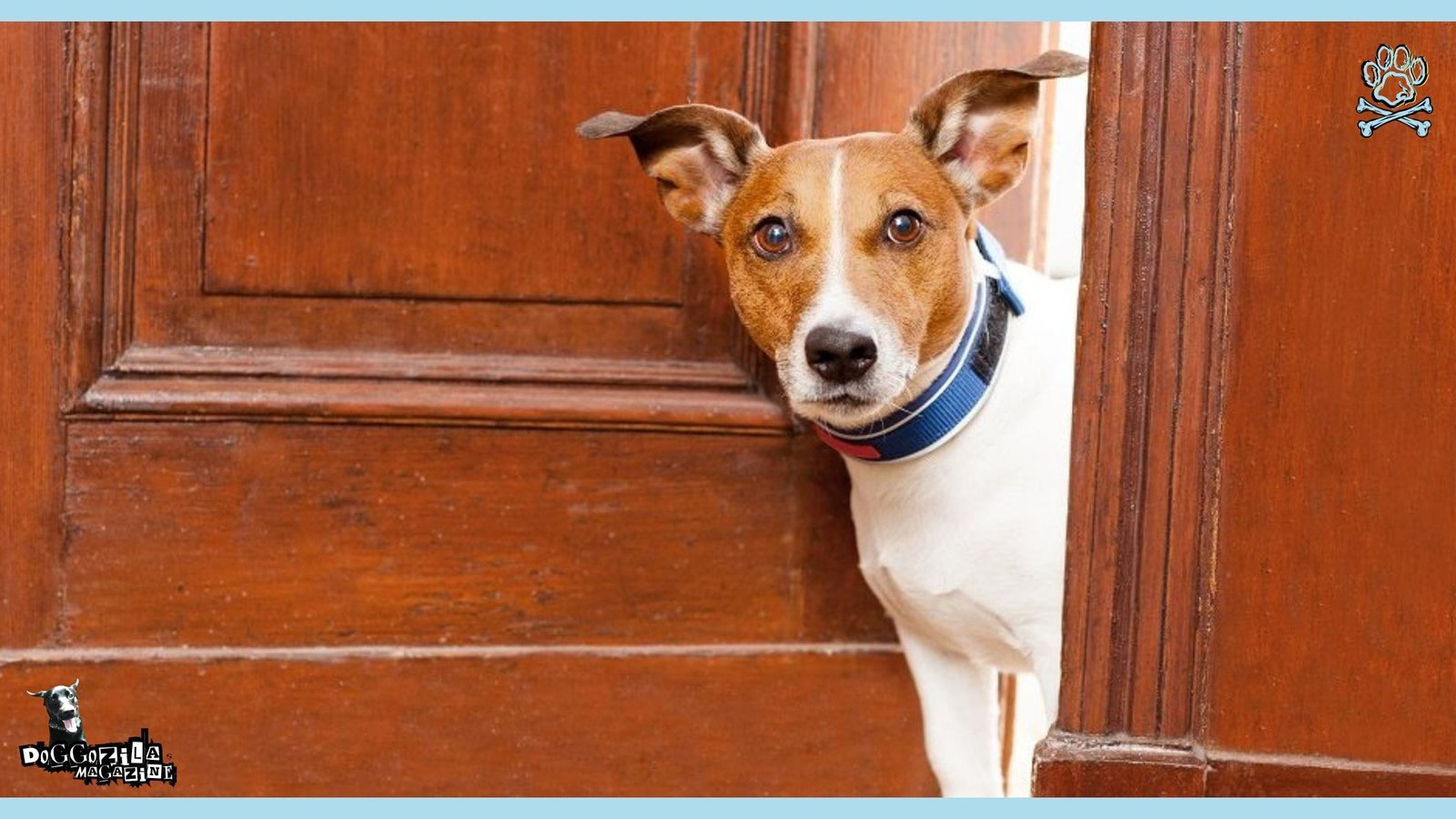
Remember that your dog would like to learn the doorbell dog etiquette as well!









